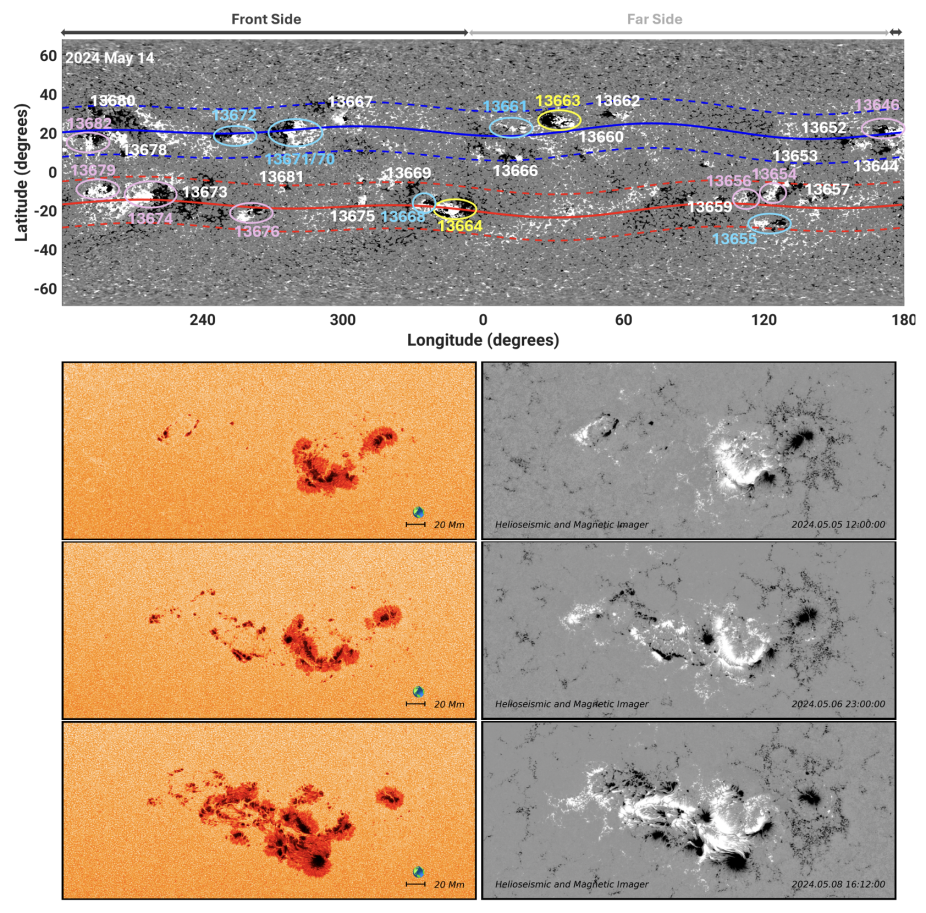
Top: Global-scale toroid patterns indicate ARs 13664 and 13668 were located in the south-toroid in such a way as to be sufficiently away from ARs in the north-toroid, indicating probability of their eruption; close proximity of ARs 13664 and 13668 indicates the possibility of complex interactions between them. Bottom: Small-scale evolution of AR13664/8 is shown with three snapshots from HMI continuum (left) and radial magnetic field(right). The active region at the right side of the first frame was denoted as AR13664 first, and AR 13668 emerged to the east of it. Multiple pairs of bipoles emerged with the positive and negative polarities seen in white and black, respectively.
The Astrophysical Journal: In the week including Mother's day 2024, active region (AR) 13664 became superactive when AR\,13668 emerged nearby, causing multiple X-class flares and CMEs, and activity level increased similar to that inferred from geomagnetic storms associated with the historic 1859 events. By analyzing bot global warped toroids on which the active regions are strung, and active-region-scale magnetic flux and helicity, we find: (i) North and South toroids have nearly identical warped patterns, with mostly longitudinal wave numbers $m=1-3$; (ii) in three longitude intervals North and South toroids were tipped away from each other in latitude, with a longitude phase-shift between them, creating locations most prone for AR eruptions; (iii) on active-region-scale, vector magnetic fields deviate far from potential fields, and therefore contain large amounts of magnetic 'free energy' available for conversion into kinetic energy and high temperature radiation; (iv) the positive and negative polarities converge toward each other, facilitating reconnection and magnetic energy release; (v) rapid changes in magnetic helicity caused by helicity injection from below that creates helicity imbalances. We conclude that the Mother's day superstorms were caused by enhanced magnetic complexity occurring due to intricate interactions among multiple active regions emerging at nearly the same locations. This suggests, predicting locations of magnetically complex ARs, and studying and tracking their eruptive states using different proxy parameters, can greatly improve our ability to forecast intense storms, not only hours but potentially weeks in advance.